Fragility within and around the archive
Luna Hupperetz
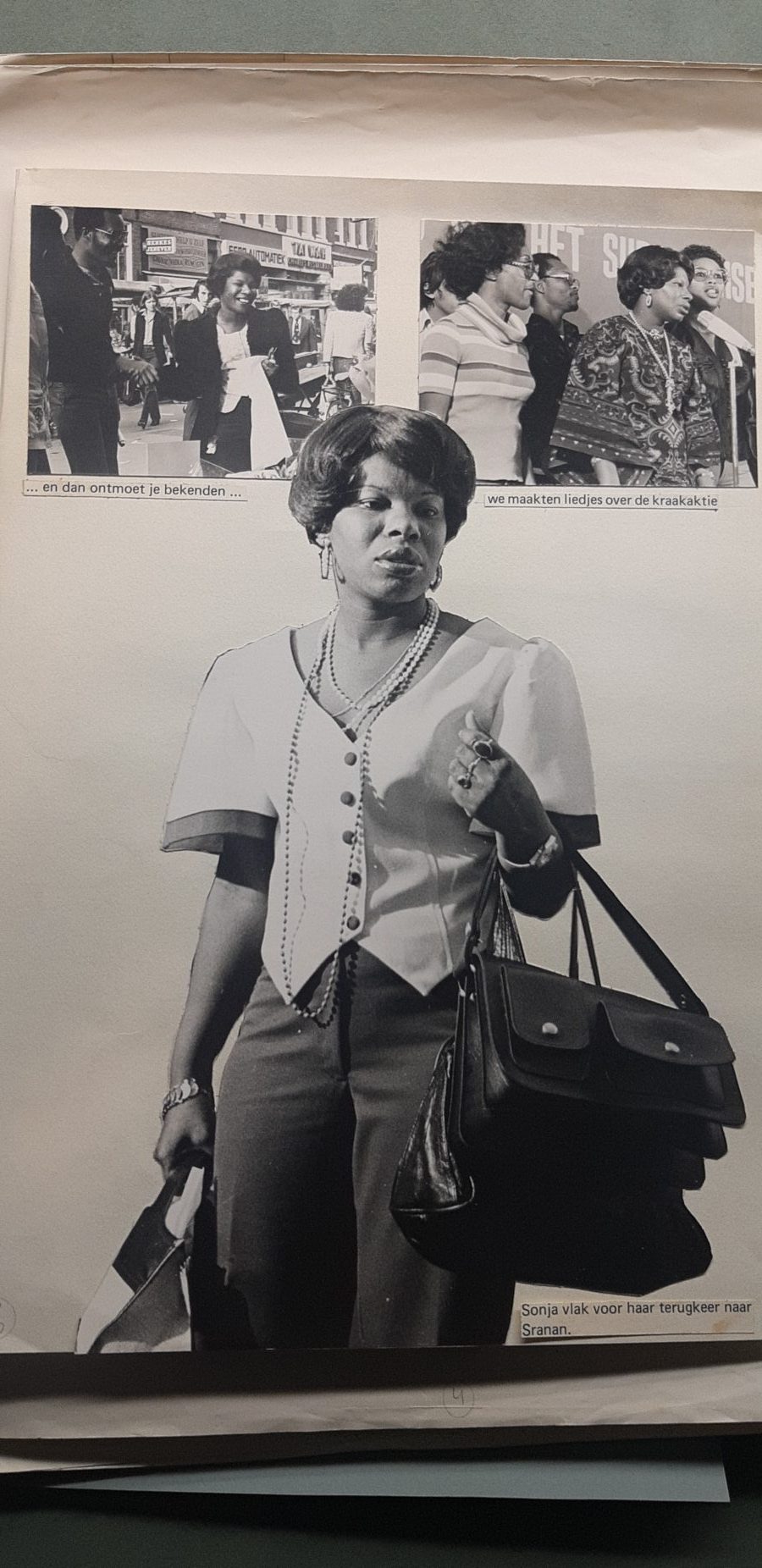
This e-log shows you…
My thoughts and stutters when encountering a postcolonial confrontation in curatorial practices.
I will share with you a selection of archival documents that have been stored by the International Institute of Social History
For almost two years now, I have been taking snippets from the Cineclub collection, dragging them into documents (articles, a MA thesis, fund applications) and into presentations, cinema rooms and conversations with friends. I exercised my academic and curatorial power over these documents by interpreting them, as a means of restituting them in front of old and new audiences and in between old and new topics of debate. The local militant history of film, and the way in which Cineclub developed a network at the intersections of politics and film in Amsterdam is something which I aspired to reconstruct. In this text I will disclose not only a part of that archival exploration, I will also try to disclose my position within this historical research.
Levels of disclosure
Disclosing a collection occurs at a technical level as well as as an imaginative level. On a sensory level I noticed:
The size: an 11.5 meter long paper archive;
The smell: of vinegar in film, of rusty cans, of sweet and musky paper;
The (lack of) colour: paper turned yellow, analogue film turned red;
The gloves: the delicacy with which one should go about in touching spliced, moulded or scratched 16mm prints;
The recognition of hand writings;
The chaos that’s behind all these well-ordered, categorized boxes.
Oema onto the silver screen
Yes, this unstudied archive evoked a certain attraction. Researching this 16mm film collection with my fellow film programmer Luisa González, we inevitably made a jump from the archive of attraction to the ‘cinema of attraction’
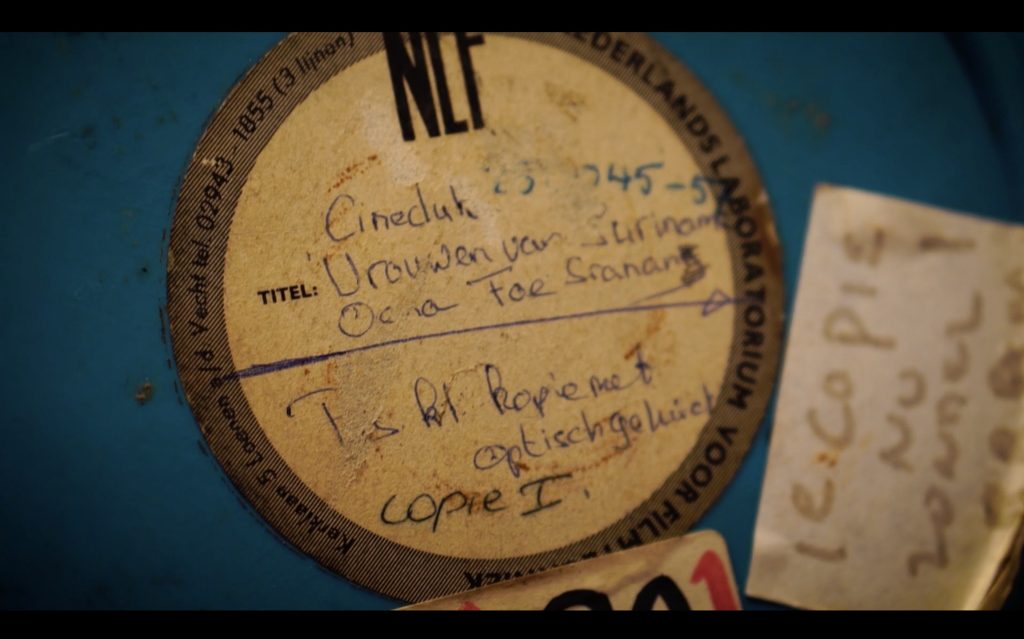
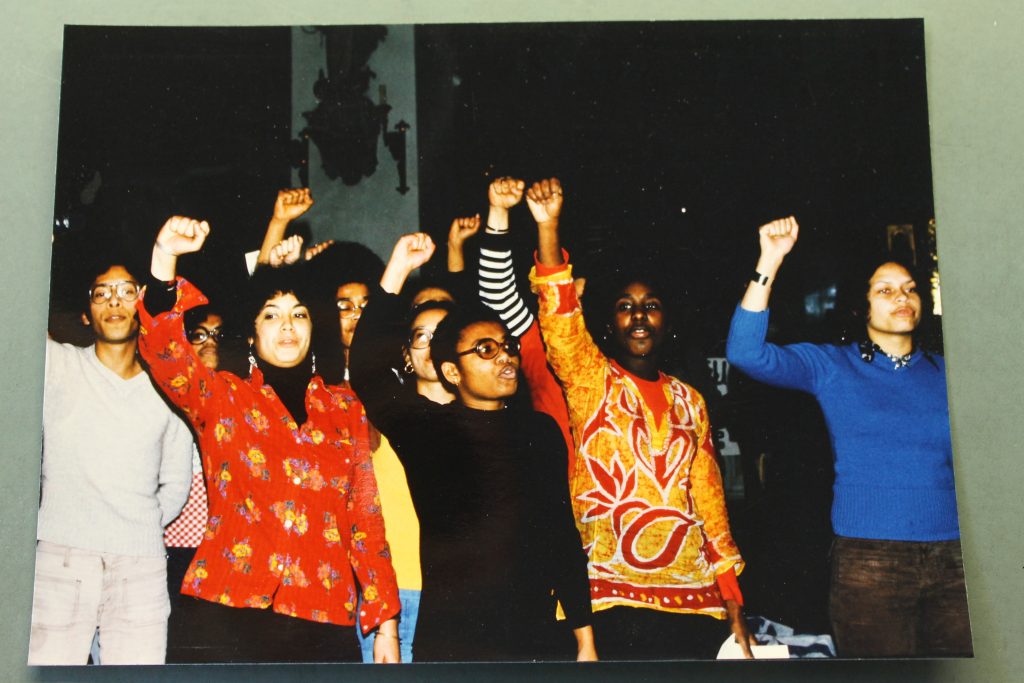
Combative fires
A happy coincidence led us to the living and breathing bodies which the archive couldn’t carry: those who created this history. They are the now sixty to seventy year old ex-LOSON activists that partially produced
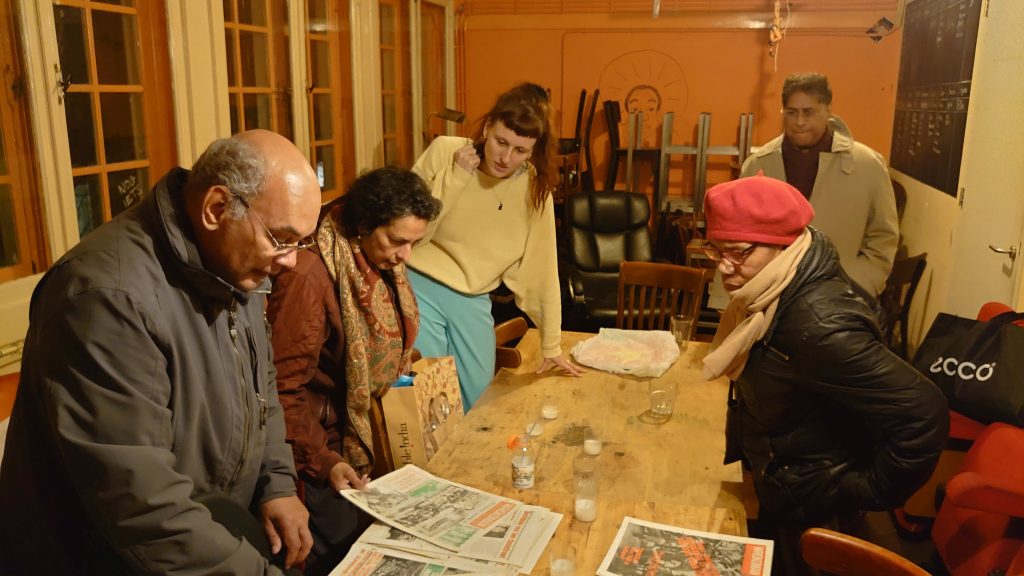
A curator’s stutter
Starting from a sensory sensation and fascination for the unopened film cans we ended up with an overwhelming and sometimes confusing oral history that took shape during our preparations for the screening of Oema foe Sranan in Filmtheater Kriterion in Amsterdam. At the night of the screening a panel discussion with Henk Lalji (filmmaker), Nadia Tilon (narrator and music supervisor), Juanita Lalji (distributor), Ditter Blom (LOSON’s secretary) and I took place. During this session I was confronted with a situation in which I needed to legitimize my interest in Oema foe Sranan in an unexpected fashion. During the discussion that was concerned with both the history as well as the current situation of Suriname, the moderator, Ditter Blom, genuinely asked me what I, given my Dutch background, thought of the film. I was overwhelmed by his question; I had expected an inquiry about my archival expertise or historical knowledge on the collection from which this film derives. The thing with which I was confronted the most, as Ditter and other audience members asked me about my personal views on the film, was that I never considered my own position-taking. It was an undiscovered history, it was the unopened files, the untold stories, the excavated emotions of others, these things were my justification in working towards the disclosing of this film and its history.
The identity politics of fear
Being surrounded by a mainly Surinamese-Dutch crowd, I felt a fear overwhelm me: the fear of saying something inappropriate as a white and Dutch-born curator. I felt stuck in the position of a researcher that thought could elevate herself from personal interest and feelings; I was there to reconstruct facts, not feelings. I mumbled about how the images fascinated me, and how I recognized parts of Surinamese-Dutch culture that I got acquainted with in the Netherlands. I mentioned something about the urgency of restoring this heritage. I heard my distanced formulations amplified through the microphone, realising how my answers fitted into the academic imperialist tradition.
Whilst explaining myself I lowered my voice, until I cut myself off apologetically by saying that I was “wandering off”. In a reaction to my stammering, someone in the audience exclaimed that “these images did not fascinate him, but angered him.” His statement echoed through my head in the days after the talk. (Exclusionary and repressive) questions of identity were on my mind.
Conclusion: Curator’s positionalities
As a curator/as a historian you pick, you choose, just like an archive that decides to store this but not that, the archivist entering selects this and not that. The archival turn has made us focus on what shelters our historical documents: the arkheion


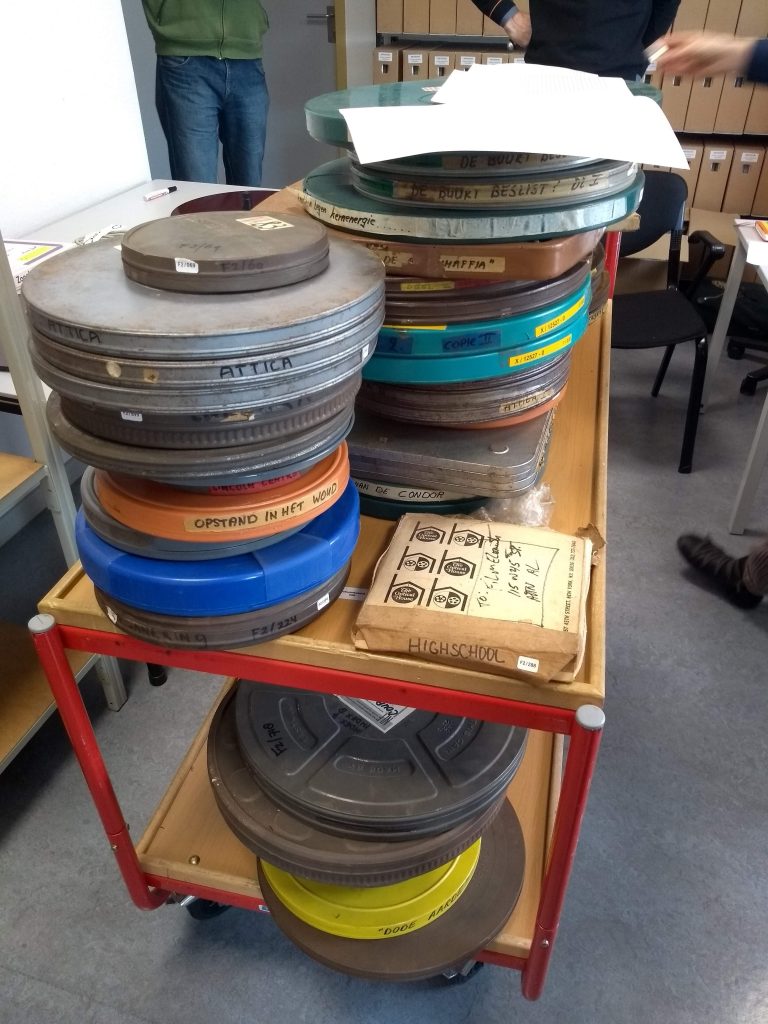

1. In opposition to the historiography that studied elites and political institutions, social history in the 1960s has shifted emphasis onto the politics of ‘ordinary’ people—especially voters and collective movements.
2. The term cinema of attractions is used when referring to the earliest stages of film history when the visual pleasure of film was more important than the narrative quality. One wants to arouse the viewer’s curiosity and surprise them. (See: Gunning, Tom. ‘The Cinema of Attraction: Early film, its spectator and the avant-garde’, 2006)
3. Suriname was colonized by the Dutch in 1667 until the year 1975, when Suriname became an independent state.
4. The scenario of the film was written by At van Praag, in collaboration with Bram Behr, the initiator of the Communist Party of Suriname (KPS), who was in good contact with the LOSON.
5. Derrida uses this ancient Greek word to define the home of the archive. For an accessible analysis of Derrida’s inaccessible text ‘Archive Fever: A Freudian’ (1995) click here.